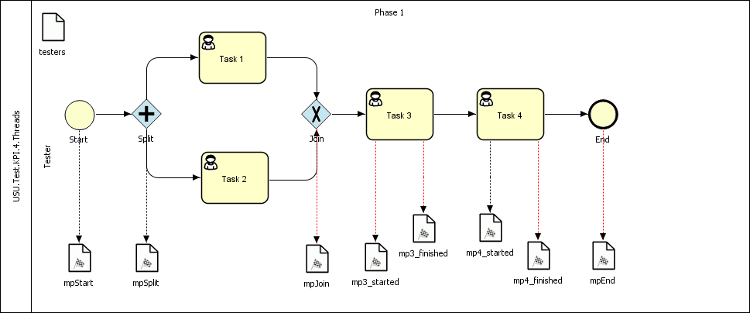Defining KPI
Defining a Measure Point:
- Open a Process in Modeller.
- Right-click a Task Float Object to open its context menu.
- Add 2 different Measure Points on 1 Flow Object, When Offered and When Finished.
- Measure Point/Add Measure Point pinpoints a timestamp you will be able to work with later.
- Measure Point options differ depending on Types of the Float Object. You can choose a specific Task Life Cycle point to measure time or Actor - to record the person who does the task.
- This creates 2 new Data Objects of type Timestamp.
Define KPIs:
- Right-Click on the Background to open the Process Context-Menu and Edit Properties.
- Navigate to the KPIs reference catalog.
- Create
 a new KPI.
a new KPI. - Select the Type Duration.
- Type String is used for Actor Measure Points
- Define a Python expression. Examples are listed above. For this usecase, we'll use "${mpTask_1_finished - mpTask_1_offered}", provided our measure points have the names 'mpTask_1_finished' and 'mpTask_1_offered'.
- Select mpTask_1_finished as the Trigger Data Object to define when the KPI value should be calculated. Whenever a value of trigger data object is changed by output data mapping a new KPI value us calculated and stored in DB.
- Save
 the KPI and the Process to accept the changes.
the KPI and the Process to accept the changes.
Example:

View Values:
Recorded KPI values can be viewed in the KPI Values catalog in the Monitoring folder.